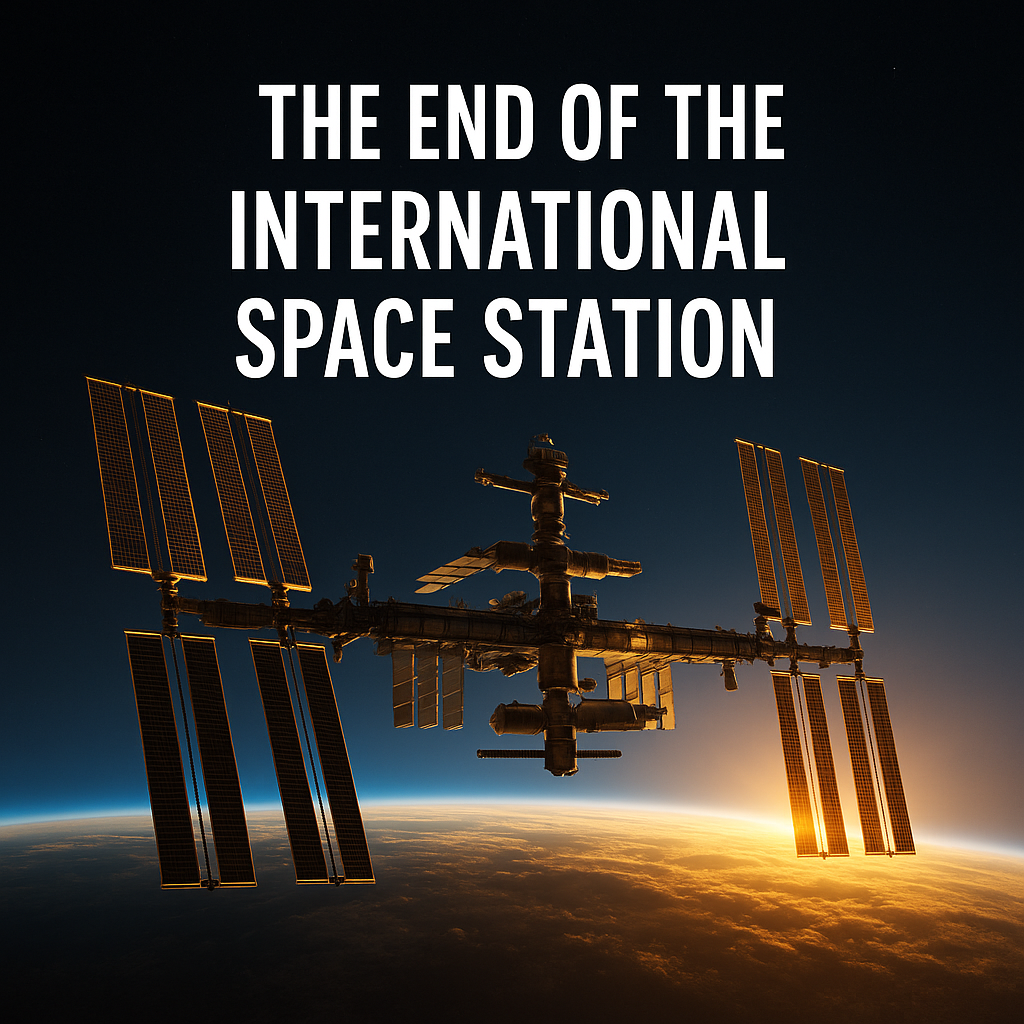The Final Orbit: Saying Goodbye to the International Space Station
For over 25 years, the International Space Station (ISS) has stood as humanity’s shining outpost in the cosmos. The ISS is the most expensive object ever constructed—costing over $160 billion—. - Rafael Benavente

Farewell to the Final Frontier: The Life and Legacy of the International Space Station
For over 25 years, the International Space Station (ISS) has stood as humanity’s shining outpost in the cosmos. A technological marvel and a symbol of international cooperation, the ISS is the most expensive object ever constructed—costing over $160 billion—and arguably the most complex.
Yet, in 2030, this masterpiece of science, engineering, and diplomacy is scheduled to make its final descent into Earth’s atmosphere, disintegrating in a fiery plunge toward the remote waters of Point Nemo. But why must such a monumental achievement meet such an ignoble end? And what legacy does it leave behind?
The Genesis of an Orbital Marvel
The story of the ISS traces its roots to the Cold War, a time when space was a geopolitical battleground. The Soviets launched Salyut 1, the first space station, in 1971. Although groundbreaking, it lasted only 175 days. Tragedy followed when three cosmonauts aboard Soyuz 11 died upon re-entry due to cabin depressurization. Undeterred, both superpowers pushed forward. The U.S. debuted Skylab in 1973, while the USSR later unveiled Mir, the first modular space station.
With the Cold War’s end, former rivals became collaborators. In 1993, the U.S. and Russia agreed to merge efforts and resources. Soon, other global space agencies—ESA, JAXA, and CSA—joined, giving birth to the ISS: a truly international undertaking in science and exploration.
Building the Impossible
Construction of the ISS began in 1998 with the launch of Russia’s Zarya module. It was a fusion of precision manufacturing and strategic design. Built from aluminum with Kevlar-reinforced armor, Zarya housed solar panels powerful enough to run a modern kitchen oven.
A month later, NASA launched the Unity module, bridging the Russian and American segments. However, the integration wasn’t seamless. Russia and the U.S. used different docking mechanisms, prompting the development of Pressurized Mating Adapters (PMAs) to unify the system. Over the next 13 years, 43 interconnected modules—scientific labs, living quarters, solar arrays, and more—were added.
The final key components included the European Columbus lab, Japan’s Kibo module with its open-air science platform, and the iconic Cupola—an observatory of seven windows providing breathtaking views of Earth. By 2011, construction was complete, and the ISS was ready to fulfill its dual mission: advancing science and symbolizing unity.
Living in Microgravity
What’s it like to live aboard this floating habitat 420 kilometers above Earth? According to astronaut Nicole Stott, life aboard the ISS is a paradox—both extraordinary and mundane. You float and fly in microgravity, yet you also clean the toilet, fix solar panels, and take out the trash—just like on Earth.
Still, life on the ISS is far from routine. Astronauts witness 16 sunrises a day as the station orbits Earth every 90 minutes at 28,000 km/h. They deal with unpredictable cosmic threats, like micrometeorites, solar radiation, and the stress of metal joints expanding and contracting through 270°C temperature swings.
This constant thermal expansion causes audible creaks—reminders of the station's fragile existence. In 2019, a microscopic air leak in the Zvezda module highlighted how even a hairline crack can jeopardize life onboard. A fleck of paint once cracked a 7mm window. Space, after all, remains unforgiving.
Why It Must End
By 2026, NASA began a gradual de-orbit of the ISS, planning its complete decommission by 2030. But why not keep it going?
First, altitude is a problem. The ISS flies in low Earth orbit (LEO), where atmospheric drag slowly pulls it down. Periodic “reboosts” using visiting spacecraft are essential. Raising it to a higher orbit could reduce drag but would increase radiation exposure and collision risk from space debris.
Second, there's the physical toll. After decades of exposure to violent temperature shifts, constant stress on metal welds, and unrelenting micrometeoroid impacts, the station is nearing the end of its safe operating life.
Third, the ISS can’t just be preserved or repurposed. NASA explored disassembling and returning it in pieces, but doing so would require 160+ spacewalks and a vehicle the size of the retired Space Shuttle—logistically impossible. Pushing it into deep space is no better: current thrusters would tear the station apart during maneuvering.
The Fiery Goodbye
So, the solution is controlled destruction. In 2030, a specially modified SpaceX Dragon capsule will attach to the ISS and guide it on its final descent. Equipped with 46 Draco thrusters—nearly triple the usual—it will pull the station into Earth's atmosphere at a trajectory ensuring total disintegration.
Its destination: Point Nemo, the “spacecraft graveyard” in the South Pacific. Located over 2,600 km from any land, this oceanic pole of inaccessibility ensures that the few surviving fragments pose no threat to human life.
As the ISS enters the atmosphere at nearly 30,000 km/h, its solar arrays and radiators will burn away first, followed by the pressurized modules. The fireball will streak across 6,000 km of sky. What remains will plunge into the depths, joining the wreckage of Mir, satellites, and defunct modules already buried there.
Legacy Beyond Orbit
As spectacular as its demise will be, the ISS’s legacy is what truly matters.
First, it demonstrated that international cooperation—even among geopolitical rivals—is possible, fruitful, and inspiring. The ISS brought together engineers, scientists, and astronauts from around the world. Its contributions to scientific research range from medical breakthroughs and clean water technologies to studies on muscle atrophy, cancer cells, and climate change.
Second, the ISS was a beacon for peace. It provided a neutral zone where diplomacy and collaboration could flourish, even as tensions simmered on Earth.
Third, it was a launchpad for private spaceflight. Today’s players—SpaceX, Blue Origin, and others—owe much to the infrastructure, experience, and lessons built from the ISS era.
Fourth, it laid the groundwork for deeper space missions. Technologies pioneered on the ISS now inform plans for Mars expeditions, lunar bases, and deep-space habitats.
What Comes Next?
With the ISS era closing, what does the future of space stations look like?
NASA is backing smaller, commercially operated space stations like StarLab and Axiom Station. These will likely be modular, flexible, and optimized for cost-efficiency. However, they won’t match the grandeur or multinational vision of the ISS.
China, meanwhile, is building its own legacy with Tiangong, launched in 2021. Smaller but growing, it positions China as a central player in human spaceflight.
Yet, as the ISS fades into the atmosphere, we must remember that its real mission was never just about exploration. As its motto proclaims, it was “Off the Earth, for the Earth.” From water purification systems to solar panel technology, the ISS gave back to humanity in tangible ways.
Conclusion: Beyond the Ashes
The destruction of the ISS in 2030 will be a solemn but spectacular event. Yet, its true end lies not in flames but in the future it inspired.
It showed us what’s possible when nations collaborate. It gave us breakthroughs in science and engineering. It prepared us to survive in space—and reminded us why we must preserve life on Earth.
Though it will vanish from the sky, the ISS remains etched into the fabric of human progress. Like the moon landings before it, the space station will forever symbolize our reach beyond limits and our refusal to stop exploring.
By Rafael Benavente
Credit: Based on the YouTube video transcript from the B1M channel: “The End of the International Space Station” (https://www.youtube.com/watch?v=cohVHaVMBl8)
